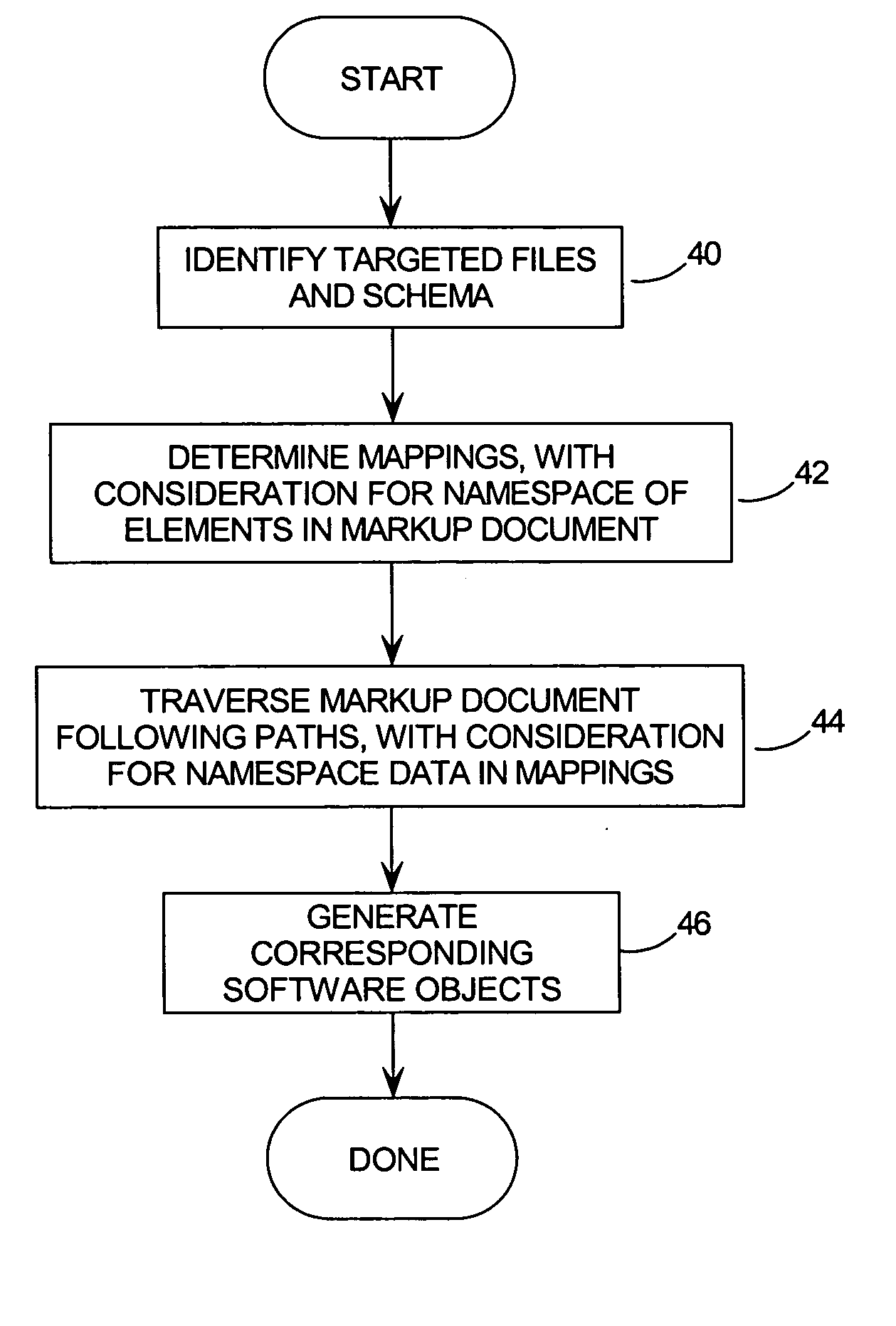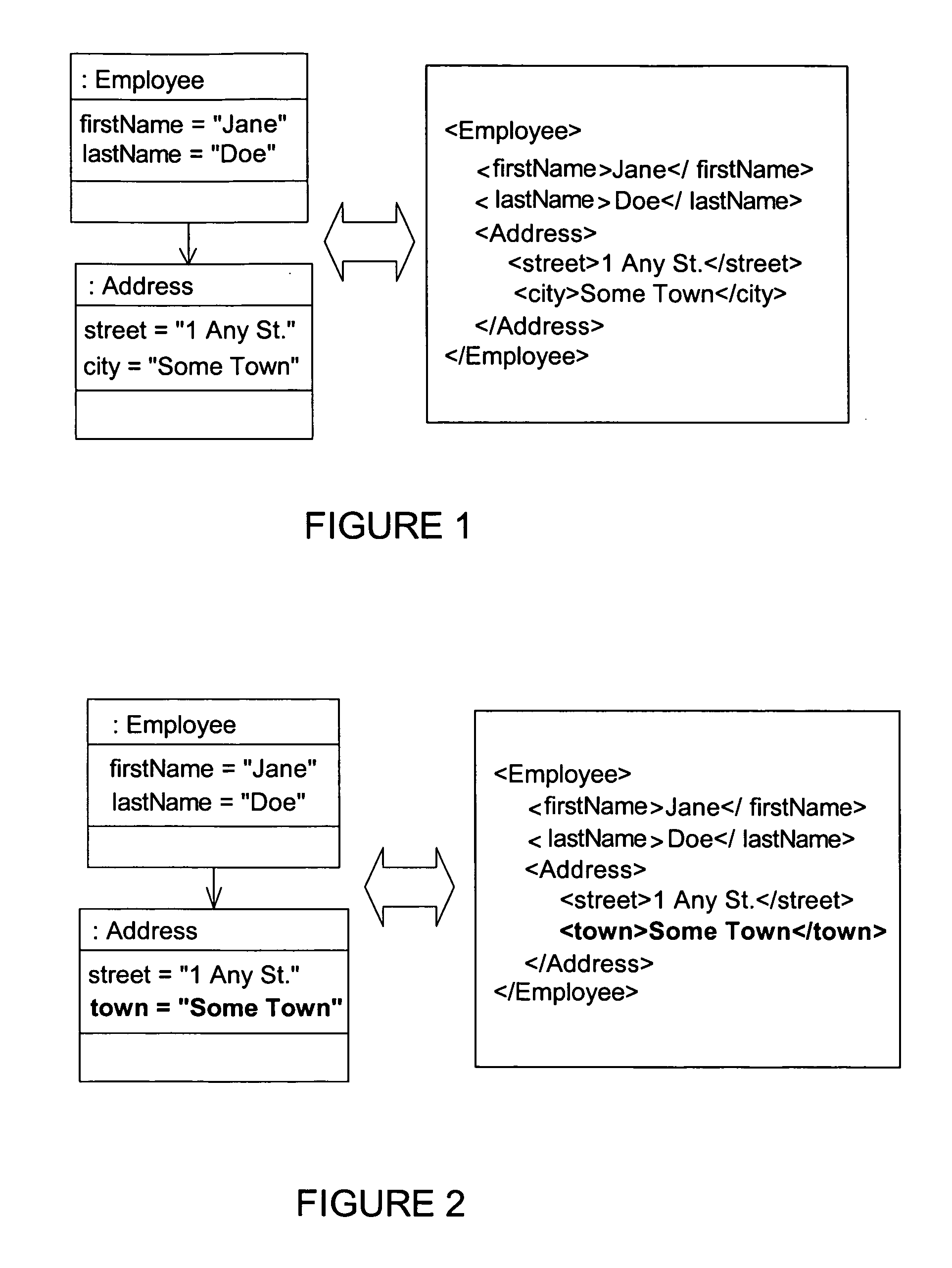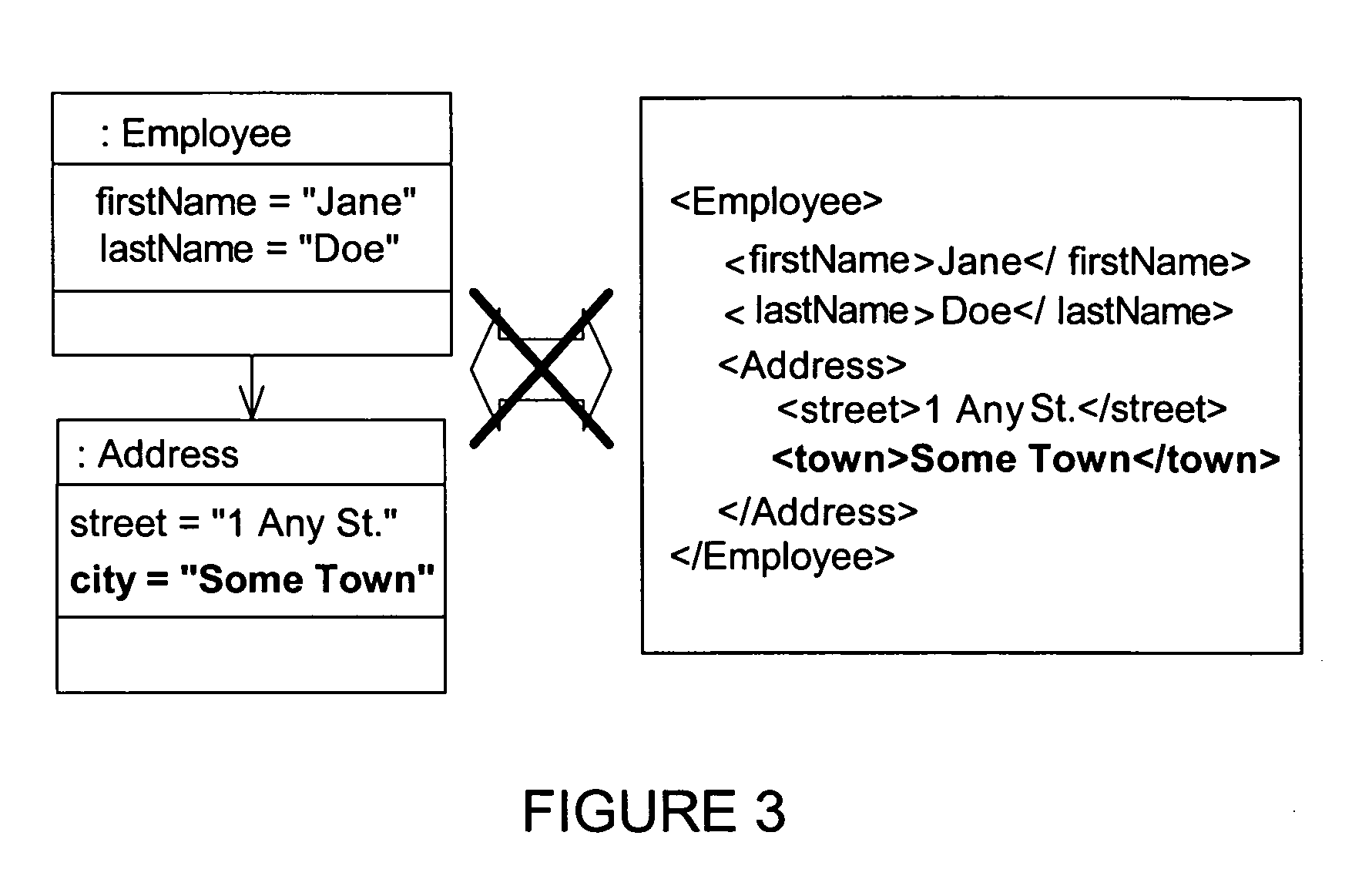Method of and system for providing namespace based object to XML mapping
a namespace based object and mapping technology, applied in the field of providing namespace based objects to xml mapping, can solve the problems of not being able to convert between software objects and xml, not being able to guarantee that an arriving document will conform to a given xml schema, and being difficult to carry around
- Summary
- Abstract
- Description
- Claims
- Application Information
AI Technical Summary
Problems solved by technology
Method used
Image
Examples
example 1
Mapping—Simple Values
[0121] In the example below the element “NAME” from the “http: / / www.oracle.com / first” namespace represents the customer's first name, and the element “NAME” from the “http: / / www.oracle.com / last” namespace represents the customer's last name:
xmlns:last=”http: / / www.oracle.com / last”> Jane Doe
These namespace data will be included in the metadata for these nodes so that the information can be preserved.
[0122] Thus, mappings will be generated for these nodes including: a mapping type which determines whether the XML element is intended to contain data as opposed to defining structure (i.e. a “simple” mapping), an Object attribute, an XPath which locates the destination in the XML document and a namespace resolver: [0123] firstName Mapping [0124] Mapping Type: direct mapping [0125] Object Attribute: firstName [0126] XPath: first:NAME / text( ) [0127] Namespace resolver: first=“http: / / www.oracle.com / first”[0128] lastName Mapping [0129] Mapping Type: direct mappin...
example 2
XML to Object Conversion—Simple Values
[0133] As shown above under Example 1, an XML document such as the following:
xmlns:last=”http: / / www.oracle.com / last”> Jane Doe
will allow the following mapping data to be generated: [0134] firstName Mapping [0135] Mapping Type: direct mapping [0136] Object Attribute: firstName [0137] XPath: first:NAME / text( ) [0138] Namespace resolver: first=“http: / / www.oracle.com / first”[0139] lastName Mapping [0140] Mapping Type: direct mapping [0141] Object Attribute: lastName [0142] XPath: last:NAME / text( ) [0143] Namespace resolver: last=“http: / / www.oracle.com / last”
[0144] When an XML document is being converted to object data each of the mappings is processed for each of the objects mapped attributes. The XPath statement used to specify the location of the XML data is executed and the resulting XML data is passed to the mapping to be converted to object data, which is set on the object. It is not necessary for the prefix used in XPath that specifies t...
example 2b
XML to Object Conversion—Simple Values
[0148] It is important to node that the prefixes used in the document (in example 2 they are “first”&“last”, in example 2b they are “ns1”&“ns2”). Do not need to be the same prefixes used in the XPath specified in the mapping.
xmlns:ns2=”http: / / www.oracle.com / last”> Jane Doe
The above document can be converted to objects using the same metadata that was specified in example 2 even though different prefixes were used. This is because even though the prefixes are different they represent the same namespaces: [0149] firstName Mapping [0150] Mapping Type: direct mapping [0151] Object Attribute: firstName [0152] XPath: first:NAME / text( ) [0153] Namespace resolver: first=“http: / / www.oracle.com / first”[0154] lastName Mapping [0155] Mapping Type: direct mapping [0156] Object Attribute: lastName [0157] XPath: last:NAME / text( ) [0158] Namespace resolver: last=“http: / / www.oracle.com / last”
[0159] Thus, the following Object code will be generated: [0160] ...
PUM
 Login to View More
Login to View More Abstract
Description
Claims
Application Information
 Login to View More
Login to View More - R&D
- Intellectual Property
- Life Sciences
- Materials
- Tech Scout
- Unparalleled Data Quality
- Higher Quality Content
- 60% Fewer Hallucinations
Browse by: Latest US Patents, China's latest patents, Technical Efficacy Thesaurus, Application Domain, Technology Topic, Popular Technical Reports.
© 2025 PatSnap. All rights reserved.Legal|Privacy policy|Modern Slavery Act Transparency Statement|Sitemap|About US| Contact US: help@patsnap.com



